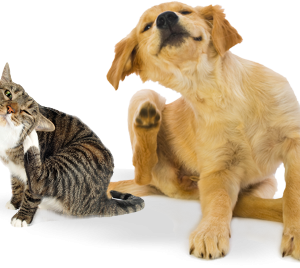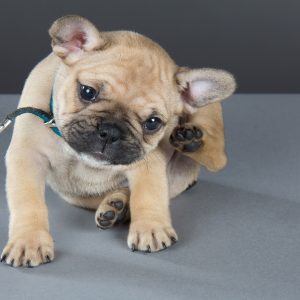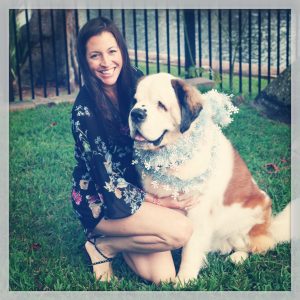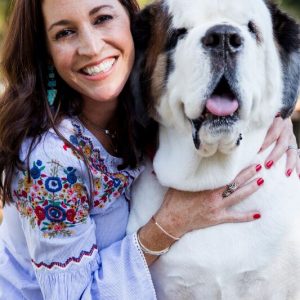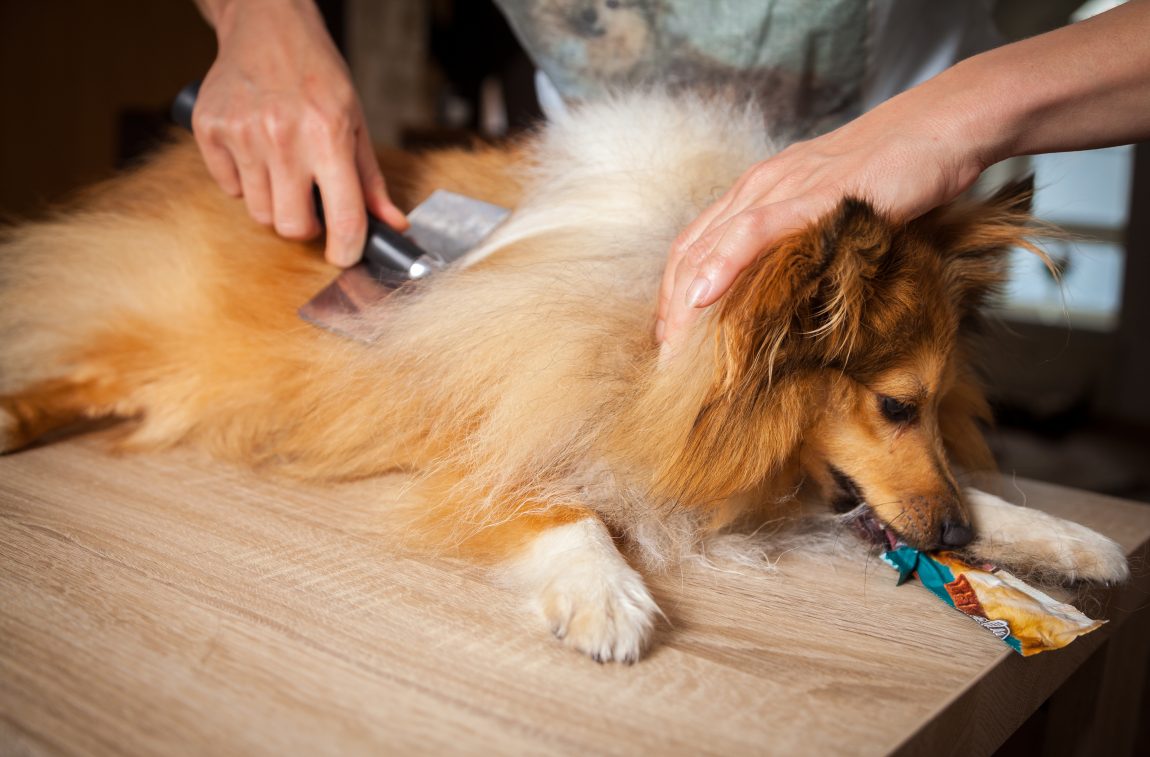
A Veterinarian’s Thoughts On How To Reduce Shedding In Pets!
As a small animal veterinarian practicing in hot South Florida, shedding dog hair is one of the most common concerns from my clients. Owning a 150-pound Saint Bernard that belongs in the Arctic, not on the sunny beaches of South Florida, I totally relate with my pet parent’s frustration with their shedding dog. So why do our pets shed, and what can we do to help combat the mess? How much shedding is normal and when should I be concerned that there is a problem?
What is shedding?
Shedding hair is a natural and normal process in dogs and cats. Unless you have a hairless breed, most pets shed. Shedding hair helps animals to get rid of their old winter coats, or summer coats, and promotes new seasonally appropriate hair growth. Natural shedding is associated with diet, health, season, temperature, stresses, and exposure to sunlight. Some uncommon reasons that pets shed are injury, trauma, and malnutrition, and it is important to distinguish the difference between normal and unhealthy shedding. Every hair has a “life cycle” with three phases and a predestined length. The anagen phase is when the hair is actively growing. The catagen phase is when hair growth stops. The telegen phase is when the hair falls out and is replaced by new hair. This form of shedding is normal process and is usually what is causing my client’s concern. Some breeds that have thick protective coats such as Huskies, or Saint Bernard’s undergo a process where all the hair from the undercoat falls out at once. This is known as “The Shed” and generally happens 2 times per year.
Is shedding more common during certain times of the year?
Before dogs became pets, shedding was restricted to spring and fall. Today with domesticated dogs that live mainly indoors, they usually shed moderately all year, especially living in South Florida, where there are no major seasonal climate changes. Dogs may shed more heavily if they have allergies, poor nutrition, and or stress.
Which breeds of dogs do not shed as much?
Unless you have a hairless breed dog, “non-shedding breeds” do not exist. Even hairless breeds shed mildly. Some breeds shed very little hair. The following is a list that includes some breeds of dogs that tend not to shed as much:
- Basenji
- Chihuahua
- Coton de Tuléar
- Dachshund
- Bichon Frisé
- Chinese Crested
- Havanese, Maltese
- Miniature Schnauzer
- Lhasa Apso, Pulimany
- Terriers (Boston, Jack Russell, Scottish, Yorkshire)
- Shih Tzu
- Boxer
- Bullmastiff
- Doberman Pinscher
- Greyhound, Komondor
- Old English Sheepdog
- Peruvian Inca Orchid
- Poodle, Portuguese Water Dog
- Rhodesian Ridgeback
- Saluki
- Schnauzer
When should I be concerned that my pet’s loss of hair is more than normal shedding?
As a small animal veterinarian, I see hair loss and skin disease which needs be addressed and treated all the time. I always advise my clients to have their pets evaluated by a veterinarian when they are seeing the following:
- Hair loss in patches
- Symmetrical hair loss on certain parts of the body
- Hair loss accompanied skin irritation (redness, bumps, rashes, open sores, or scabs)
- Bald spots or thinning of coat
- Dull, dry hair that pulls out easily
- Scratching
- Constant foot licking or face rubbing
What can I do at home to help decrease the shedding and keep my house clean?
Unfortunately, there is no way to completely stop the shedding, but there are ways to help reduce the amount of hair and mess:
- Routine grooming is essential for all dogs. Daily brushing or combing your dog’s hair will help to remove the dead hairs before they fall onto the floor. My number one recommended brush is the Furminator. I advise my clients to use this brush daily on their pets. The design of the edge allows the tool to push through the topcoat and easily and gently remove the undercoat and loose hair without cutting or damaging the dog’s skin. They come in different sizes and types for different hair coats.
- Omega 3 and 6 Fatty Acids- SHED-X. This product is pure omega 3 and 6 in an oil form that you place on top of your pet’s food daily. What is different with this product than other supplements is that it is an oil and allows you to dose your dog with the highest, yet safest, omega 3 and 6 fatty acid supplement advised. The higher dosing is what significantly decreases the shedding. The oil form allows you to give the highest dose possible.
I hope this article provides some much needed tips on how to reduce the shedding and mess in your home. Although frustrating and messy, shedding is a normal and healthy process for our pets. We always want the best for them and to ensure their health and well-being. The tradeoff for all the extra mess is the love and dedication these guys give back to us. A little hair is worth the extra love! If you have any questions or concerns, you should always visit or call your veterinarian. They are your best resource to ensure the health and well-being of your pets.
Please contact me with any of your animal questions at :
foreverfreckledblog@gmail.com

